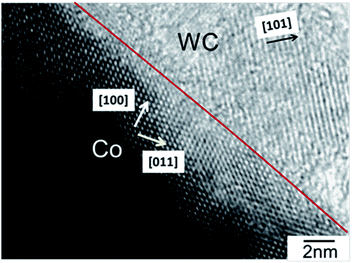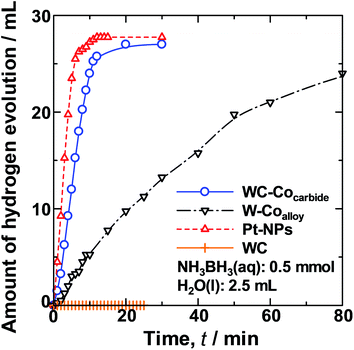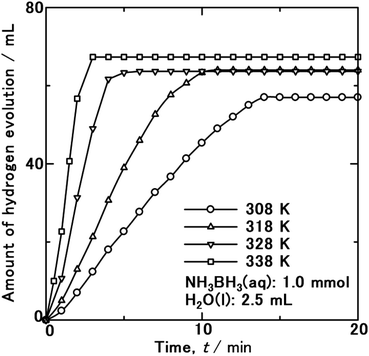


兵庫県立大:アンモニアから水素を抽出:安価な新触媒(動画):
Univ of Hyogo:Extracting hydrogen from ammonia:Inexpensive new catalyst:
兵库大学:从氨中提取氢气:廉价的新催化剂
ー水素の生産をもっと低コストでー
兵庫県立大大学院工学研究科
森下政夫教授(熱力学)研究チーム:
- 高価な白金と同等の効率で、
- アンモニア化合物から水素を抽出できる、
- ’安価で安定した新触媒’を開発した。
アンモニアから水素を抽出:
次世代エネルギーとして期待される水素を、アンモニアから低コストで生産する、
活用技術への応用が期待される。
研究成果は英王立化学会誌に掲載された。
安価な新触媒の必要性:
- 現在、世界中で、
- 水素を、アンモニアなどにして貯蔵し、
- 「必要な時に触媒を使って取り出す新触媒」が研究されている。
現在、触媒として性能が高いのは白金だ。
しかし、コストがかかるため、安価な代替触媒の開発が求められていた。
タングステン炭化物(WC)に注目:
- 白金と似た電子軌道(電子状態)を持ち、
- 50年前から代替触媒として期待されている、
- タングステン炭化物(WC)に改めて注目した。
「WCの非磁性」が触媒性能の差:
- 物質の磁気的特性のことを「磁性」と呼ぶ。
- 白金は、磁石を近づけるとくっつく「常磁性」の性質を持つ。
一方、WCはくっつかない「非磁性」だ。
これが触媒性能の差につながっていると考えた。
- WCに「強磁性」金属コバルトを混合
- 試しに、WCに自ら磁石特性を持つ、
- 「強磁性」金属コバルトを混ぜてみた。
強磁性の性質が発現:
それを触媒に使うと、水に溶かしたアンモニア化合物から、
「白金とほぼ同じ効率で水素を取り出せる」ようになった。
森下教授の解説:
- コバルトを混ぜることで、
- 水素の原子核をコバルトの磁力により、
- 引き寄せて整列させることができる。
水素分子に変化しやすくなったとみられる。
森下教授の談話:
「水素を発生させる触媒性能に、磁性が関与していること」が、初めて明らかになった。
「白金を触媒として使っている他の用途にも、活用が広がる」と話している。
毎日新聞
https://mainichi.jp/articles/20220104/k00/00m/040/247000c
記者発表
2021年6月 | 兵庫県立大学
白金フリー水素発生触媒の活性化に磁性体の効果確認
趣旨
兵庫県立大学大学院工学研究科
森下政夫教授水素発生触媒の活性化に磁性体の効果があることを発見しました。
本研究の成果
内部磁場の概念に基づく、
新しい触媒設計のストラテジーを、
世界で初めて示すもの。
大変画期的な発見であります。
https://www.u-hyogo.ac.jp/outline/media/press/2021/monthly/2021_06.html
Catalytic activity of Co-nanocrystal-doped tungsten carbide arising from an internal magnetic field
RSC Advances (RSC Publishing) DOI:10.1039/D1RA01181B
Abstract
Pt is an excellent and widely used hydrogen evolution reaction (HER) catalyst.
However, it is a rare and expensive metal, and alternative catalysts are being sought to facilitate the hydrogen economy.
As tungsten carbide (WC)
has a Pt-like occupied density of states, it is expected to exhibit catalytic activity.However, unlike Pt,
excellent catalytic activity has not yet been observed for mono WC.One of the intrinsic differences between WC and Pt is in their magnetic properties;
WC is non-magnetic, whereas Pt exhibits high magnetic susceptibility.
In this study, the WC lattice
was doped with ferromagnetic Co nanocrystals to introduce an ordered-spin atomic configuration.
The catalytic activity of the Co-doped WC was ∼30% higher than that of Pt nanoparticles for the HER during the hydrolysis of ammonia borane (NH3BH3),
which is currently attracting attention as a hydrogen fuel source.
Measurements of the magnetisation, enthalpy of adsorption, and activation energy indicated that
the synergistic effect of the WC matrix promoting hydrolytic cleavage of NH3BH3 and the ferromagnetic Co crystals interacting with the nucleus spin of the protons was responsible for the enhanced catalytic activity.
This study
presents a new catalyst design strategy based on the concept of an internal magnetic field.The WC–Co material presented here
is expected to have a wide range of applications as an HER catalyst.
https://pubs.rsc.org/en/content/articlehtml/2021/ra/d1ra01181b